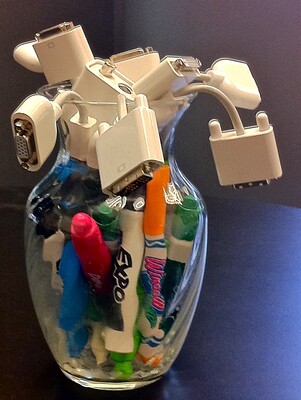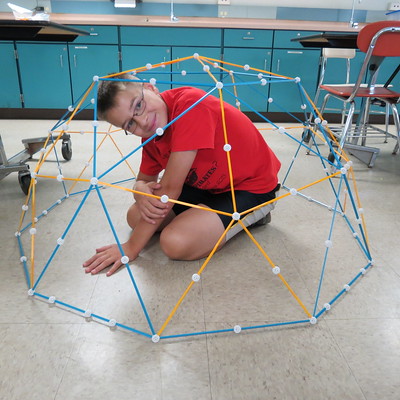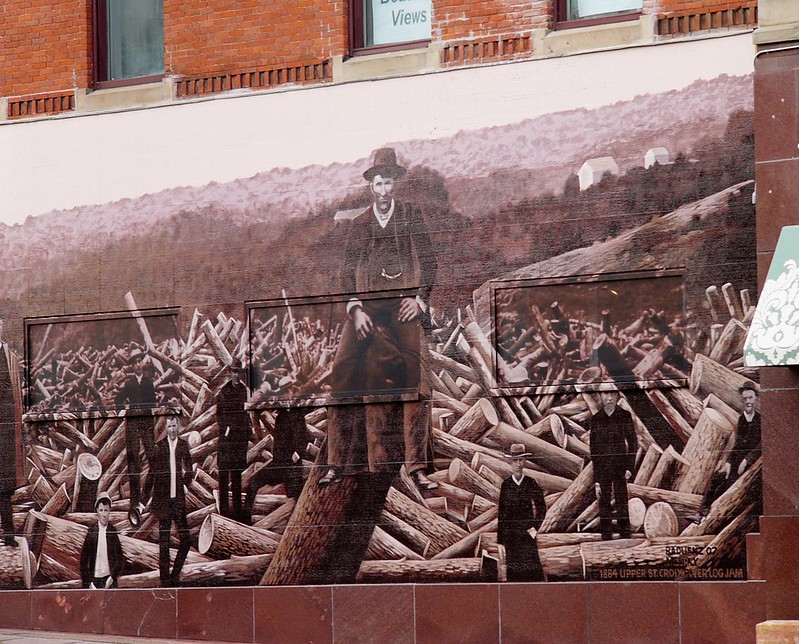Archive for the ‘Problems’ Category
Which new product development project should we do first?
 X: Of the pool of candidate new product development projects, which project should we do first?
X: Of the pool of candidate new product development projects, which project should we do first?
Me: Let’s do the one that makes us the most money.
X: Which project will make the most money?
Me: The one where the most customers buy the new product, pay a reasonable price, and feel good doing it.
X: And which one is that?
Me: The one that solves the most significant problem.
X: Oh, I know our company’s most significant problem. Let’s solve that one.
Me: No. Customers don’t care about our problems, they only care about their problems.
X: So, you’re saying we should solve the customers’ problem?
Me: Yes.
X: Are you sure?
Me: Yes.
X: We haven’t done that in the past. Why should we do it now?
Me: Have your previous projects generated revenue that met your expectations?
X: No, they’ve delivered less than we hoped.
Me: Well, that’s because there’s no place for hope in this game.
X: What do you mean?
Me: You can’t hope they’ll buy it. You need to know the customers’ problems and solve them.
X: Are you always like this?
Me: Only when it comes to customers and their problems.
image credit: Kyle Pearce
The first step is to admit you have a problem.
 Nothing happens until the pain caused by a problem is greater than the pain of keeping things as they are.
Nothing happens until the pain caused by a problem is greater than the pain of keeping things as they are.
Problems aren’t bad for business. What’s bad for business is failing to acknowledge them.
The consternation that comes from the newly-acknowledged problem is the seed from which the solution grows.
There can be no solution until there’s a problem.
When the company doesn’t have a big problem, it has a bigger problem – complacency.
If you want to feel anxious about something, feel anxious that everything is going swimmingly.
Successful companies tolerate problems because they can.
Successful companies that tolerate their problems for too long become unsuccessful companies.
What happens to people in your company that talk about big problems? Are they celebrated, ignored, or ostracized? And what behavior does that reinforce? And how do you feel about that?
When everyone knows there’s a problem yet it goes unacknowledged, trust erodes.
And without trust, you don’t have much.
Problems, Learning, Business Models, and People
 If you know the right answer, you’re working on an old problem or you’re misapplying your experience.
If you know the right answer, you’re working on an old problem or you’re misapplying your experience.
If you are 100% sure how things will turn out, let someone else do it.
If there’s no uncertainty, there can be no learning.
If there’s no learning, your upstart competitors are gaining on you.
If you don’t know what to do, you’ve started the learning cycle.
If you add energy to your business model and it delivers less output, it’s time for a new business model.
If you wait until you’re sure you need a new business model, you waited too long.
Successful business models outlast their usefulness because they’ve been so profitable.
When there’s a project with a 95% chance to increase sales by 3%, there’s no place for a project with a 50% chance to increase sales by 100%.
When progress has slowed, maybe the informal networks have decided slower is faster.
If there’s something in the way, but you cannot figure out what it is, it might be you.
“A bouquet of wilting adapters” by rexhammock is licensed under CC BY-SA 2.0.
Is it time to break the logjam?
Clearing a logjam is not about increasing the force of the water. It’s about moving one log out of the way, watching what happens, and choosing the next log to move.
Crossing a raging river is not about pushing against the current. It’s about seeing what’s missing and using logs to build a raft.
Trekking across the tundra after crossing the raging river is not about holding onto the logs that helped you cross. It’s about seeing what’s not needed and leaving the raft by the river.
The trick is to know when to move the logs, when to use them to build a raft, and when to leave them behind.
Image credit: “Log Jam Mural _ Stillwater MN” by Kathleen Tyler Conklin is licensed under CC BY 2.0.
How To Solve Transparent Problems
 One of the best problems to solve for your customers is the problem they don’t know they have. If you can pull it off, you will create an entirely new value proposition for them and enable them to do things they cannot do today. But the problem is they can’t ask you to solve it because they don’t know they have it.
One of the best problems to solve for your customers is the problem they don’t know they have. If you can pull it off, you will create an entirely new value proposition for them and enable them to do things they cannot do today. But the problem is they can’t ask you to solve it because they don’t know they have it.
To identify problems customs can’t see, you’ve got to watch them go about their business. You’ve got to watch all aspects of their work and understand what they do and why they do it that way. And it’s their why that helps you find the transparent problems. When they tell you their why, they tell you the things they think cannot change and the things they consider fundamental constraints. Their whys tell you what they think is unchangeable. And from their perspective, they’re right. These things are unchangeable because they don’t know what’s possible with new technologies.
Once you know their unchangeable constraints, choose one to work on and turn it into a tight problem statement. Then use your best tools and methods to solve it. Once solved, you’ve got to make a functional prototype and show them in person. Without going back to them with a demonstration of a functional prototype, they won’t believe you. Remember, you did something they didn’t think was possible and changed the unchangeable.
When demonstrating the prototype to the customer, just show it in action. Don’t describe it, just show them and let them ask questions. Listen to their questions so you can see the prototype through their eyes. And to avoid leading the witness, limit yourself to questions that help you understand why they see the prototype as they do. The way they see the prototype will be different than your expectations, and that difference is called learning. And if you find yourself disagreeing with them, you’re doing it wrong.
This first prototype won’t hit the mark exactly, but it will impress the customer and it will build trust with them. And because they watched the prototype in action, they will be able to tell you how to improve it. Or better yet, with their newfound understanding of what’s possible, they might be able to see a more meaningful transparent problem that, once solved, could revolutionize their industry.
Customers know their work and you know what’s possible. And prototypes are a great way to create the future together.
“Transparent” by Rene Mensen is licensed under CC BY 2.0.
Things I Sometimes Forget
 Clean-sheet designs are fun, right up until they don’t launch.
Clean-sheet designs are fun, right up until they don’t launch.
When you feel the urge to do a clean-sheet design, go home early.
When you don’t know how to make it better, make it worse and do the opposite.
Without trying, there is no way to know if it will work.
Trying sometimes feels like dying.
But without trying, nothing changes.
Agreement is important, but only after the critical decision has been made.
When there’s 100% agreement, you waited too long to make the decision.
When it’s unclear who the customer is, ask “Whose problem will be solved?”
When the value proposition is unclear, ask ‘What problem will be solved?”
When your technology becomes mature, no one wants to believe it.
When everyone believes the technology is mature, you should have started working on the new technology four years ago.
If your projects are slow, blame your decision-making processes.
Two of the most important decisions: which projects to start and which to stop.
All the action happens at the interfaces, but that’s also where two spans of control come together and chafe.
If you want to understand your silos and why they don’t play nicely together, look at the organizational chart.
When a company starts up, the product sets the organizational structure.
Then, once a company is mature, the organizational structure constrains the product.
At the early stages of a project, there’s a lot of uncertainty.
And once the project is complete, there’s a lot of uncertainty.
“Toys Never Forget” by Alyssa L. Miller is marked with CC BY 2.0.
Problems, Solutions, and Complaints
 If you see a problem, tell someone. But, also, tell them how you’d like to improve things.
If you see a problem, tell someone. But, also, tell them how you’d like to improve things.
Once you see a problem, you have an obligation to seek a solution.
Complaining is telling someone they have a problem but stopping short of offering solutions.
To stop someone from complaining, ask them how they might make the situation better.
Problems are good when people use them as a forcing function to create new offerings.
Problems are bad when people articulate them and then go home early.
Thing is, problems aren’t good or bad. It’s our response that determines their flavor.
If it’s your problem, it can never be our solution.
Sometimes the best solution to a problem is to solve a different one.
Problem-solving is 90% problem definition and 10% getting ready to define the problem.
When people don’t look critically at the situation, there are no problems. And that’s a big problem.
Big problems require big solutions. And that’s why it’s skillful to convert big ones into smaller ones.
Solving the right problem is much more important than solving the biggest problem.
If the team thinks it’s impossible to solve the problem, redefine the problem and solve that one.
You can relabel problems as “opportunities” as long as you remember they’re still problems
When it comes to problem-solving, there is no partial credit. A problem is either solved or it isn’t.
Stop reusing old ideas and start solving new problems.
 Creating new ideas is easy. Sit down, quiet your mind, and create a list of five new ideas. There. You’ve done it. Five new ideas. It didn’t take you a long time to create them. But ideas are cheap.
Creating new ideas is easy. Sit down, quiet your mind, and create a list of five new ideas. There. You’ve done it. Five new ideas. It didn’t take you a long time to create them. But ideas are cheap.
Converting ideas into sellable products and selling them is difficult and expensive. A customer wants to buy the new product when the underlying idea that powers the new product solves an important problem for them. In that way, ideas whose solutions don’t solve important problems aren’t good ideas. And in order to convert a good idea into a winning product, dirt, rocks, and sticks (natural resources) must be converted into parts and those parts must be assembled into products. That is expensive and time-consuming and requires a factory, tools, and people that know how to make things. And then the people that know how to sell things must apply their trade. This, too, adds to the difficulty and expense of converting ideas into winning products.
The only thing more expensive than converting new ideas into winning products is reusing your tired, old ideas until your offerings run out of sizzle. While you extend and defend, your competitors convert new ideas into new value propositions that bring shame to your offering and your brand. (To be clear, most extend-and-defend programs are actually defend-and-defend programs.) And while you reuse/leverage your long-in-the-tooth ideas, start-ups create whole new technologies from scratch (new ideas on a grand scale) and pull the rug out from under you. The trouble is that the ultra-high cost of extend-and-defend is invisible in the short term. In fact, when coupled with reuse, it’s highly profitable in the moment. It takes years for the wheels to fall off the extend-and-defend bus, but make no mistake, the wheels fall off.
When you find the urge to create a laundry list of new ideas, don’t. Instead, solve new problems for your customers. And when you feel the immense pressure to extend and defend, don’t. Instead, solve new problems for your customers.
And when all that gets old, repeat as needed.
“Cave paintings” by allspice1 is licensed under CC BY-ND 2.0
How to Decide if Your Problem is Worth Solving
 How to decide if a problem is worth solving?
How to decide if a problem is worth solving?
If it’s a new problem, try to solve it.
If it’s a problem that’s already been solved, it can’t be a new problem. Let someone else re-solve it.
If a new problem is big, solve it in a small way. If that doesn’t work, try to solve it in a smaller way.
If there’s a consensus that the problem is worth solving, don’t bother. Nothing great comes from consensus.
If the Status Quo tells you not to solve it, you’ve hit paydirt!
If when you tell people about solving the problem they laugh, you’re onto something.
If solving the problem threatens the experts, double down.
If solving the problem obsoletes your most valuable product, solve it before your competition does.
If solving the problem blows up your value proposition, light the match.
If solving the problem replaces your product with a service, that’s a recipe for recurring revenue.
If solving the problem frees up a factory, well, now you have a free factory to make other things.
If solving the problem makes others look bad, that’s why they’re trying to block you from solving it.
If you want to know if you’re doing it right, make a list of the new problems you’ve tried to solve.
If your list is short, make it longer.
“CERDEC Math and Science Summer Camp, 2013” by CCDC_C5ISR is licensed under CC BY 2.0
Work is 95% Noise
 There’s a lot of noise at work. I’m not talking about the audible noise you hear in your office or the chatter of your coworkers. I’m talking about the noise purposefully created to slather a layer of importance to things that aren’t all that important.
There’s a lot of noise at work. I’m not talking about the audible noise you hear in your office or the chatter of your coworkers. I’m talking about the noise purposefully created to slather a layer of importance to things that aren’t all that important.
Corporate priorities are created at the company level to move the company in a new direction. There are regular presentations made by the leadership team to educate everyone on the new direction and help everyone think the initiative is important. This takes a lot of time and energy. Then, there are regular meetings held across the company to hear the sermon of the corporate priorities. How much does it cost for everyone in the company to sit through a one-hour sermon on corporate priorities? How much does it cost to do this quarterly or monthly? Because the cost is high and the value is low, corporate priorities have a high noise content.
Monthly reports on the status of the corporate priorities take a lot of work to pull together. These reports tell us how things are going at a high level but are not actionable. Some initiatives are green, some are yellow, and some are red. So what? After reading a monthly report of a corporate initiative, have you ever changed your work in any way? I didn’t think so, because the report is noise.
If your work brings about no changes, the work is noise.
If you complete a talent assessment for your team and no one’s work changes or no one changes teams, the talent assessment is noise. If you are asked to create a summary of your work experience to support a talent assessment and nothing changes after the assessment, the talent assessment program is noise. If you are asked to put together a succession plan and nothing changes, the succession planning process is noise. If you are asked to put together an improvement plan for your team’s culture and no one reads the plan or holds you accountable, the culture improvement program is noise.
If you write a monthly report and no asks questions about it, the monthly reporting process is noise. If you write a charter for a project and no one asks questions about it, the project definition process is noise. If someone sets up a meeting without a defined agenda, that meeting is noise. If no one writes meeting minutes, the meeting is noise. If there will be no decision made at the meeting, don’t go because that meeting is noise.
Work is 95% noise.
If someone asks for help, help them because that is not noise. When you see a problem, do something about it because that’s not noise. When you see something that’s missing, fill the hole because that’s not noise. When something interests you, investigate it because that’s not noise. When your curiosity gets the best of you, that’s not noise. When something is important to you, that’s not noise. When something should be important to someone else, tell them because that’s not noise.
When the work is noise, don’t do it. But if you must do it, do it with minimal effort and do it poorly. Don’t start the work until two weeks after the deadline. With luck, next time they’ll ask someone else to do it. If you think the work is noise, it probably is. Don’t do the work until you’re asked three times. Then, do it poorly.
If the customer won’t benefit, the work is noise. If the work is new and the customer might benefit, the work is not noise. If you are unsure if the work is noise, ask how might customer benefit. If you are pursuing something that will grow the top line, it’s not noise. If you’re unsure if the work is noise, ask how the work might grow the top line.
If it’s noise, say no. That will free up your time to say yes to things that are real.
“Olive with her NYE hearing protection… Muffs on upside down work great!” by Bekathwia is licensed under CC BY-SA 2.0
Some Problems With Problems
 If you don’t know what the problem is, that’s your first problem.
If you don’t know what the problem is, that’s your first problem.
A problem can’t be a problem unless there’s a solution. If there’s no possible solution, don’t try to solve it, because it’s not a problem.
If there’s no problem, you have a big problem.
If you’re trying to solve a problem, but the solution is outside your sphere of influence, you’re taking on someone else’s problem.
If someone tries to give you a gift but you don’t accept it, it’s still theirs. It’s like that with problems.
If you want someone to do the right thing, create a problem for them that, when solved, the right thing gets done.
Problems are good motivators and bad caretakers.
A problem is between two things, e.g., a hammer and your thumb. Your job is to figure out the right two things.
When someone tries to give you their problem, keep your hands in your pockets.
A problem can be solved before it happens, while it happens, or after it happened. Each time domain has different solutions, different costs, and different consequences. Your job is to choose the most appropriate time domain.
If you have three problems, solve one at a time until you’re done.
Solving someone else’s problem is a worst practice.
If you solve the wrong problem, you consume all the resources needed to solve the right problem without any of the benefits of solving it.
Ready, fire, aim is no way to solve problems.
When it comes to problems, defining IS solving.
If you learn one element of problem-solving, learn to see when someone is trying to give you their problem.
“My first solved Rubik’s cube” by Nina Stawski is licensed under CC BY 2.0

 Mike Shipulski
Mike Shipulski